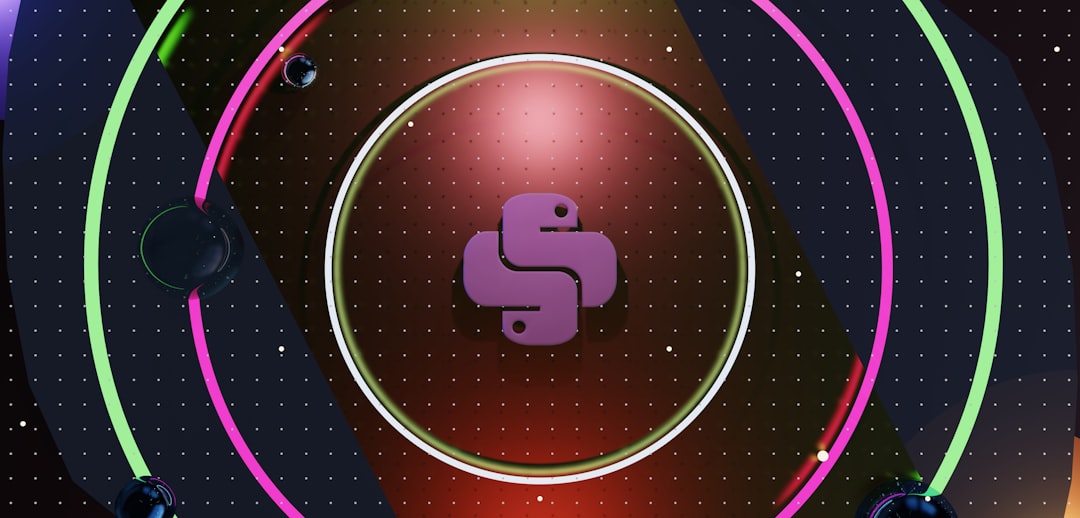Human vision shapes our reality in profound ways, yet what we perceive is merely one interpretation of the world around us. Our eyes collect light, but it's our brains that transform this information into the colorful world we experience. This leads to fascinating questions: Is what we see the "real" world? Do other animals perceive colors as we do? How complete is human vision compared to other species? The answers reveal that our perception is just one version of reality—neither complete nor necessarily "correct."
The Mechanics of Human Vision
Human vision is an extraordinarily complex process involving the coordinated efforts of our eyes and brain. When we observe an object, light passes through the cornea, pupil, and lens before forming an inverted image on the retina at the back of the eye. Despite common misconceptions, it's actually the cornea, not the lens, that provides most of the eye's refractive power.
The retina contains millions of light-sensitive cells called photoreceptors, which translate light into electrical signals. These signals travel through the optic nerves to the brain's visual cortices, where they're processed into what we perceive as vision. This entire system represents one of our most studied sensory mechanisms, with approximately one-quarter of the human brain dedicated to visual processing—more than any other sense.
A pair of healthy human eyes provides a total field of view of approximately 200 degrees horizontally and 135 degrees vertically. Our binocular vision (where both eyes share about 120 degrees of the visual field) allows us to perceive depth effectively.
The Creation of Color in the Human Brain
Perhaps the most surprising aspect of human vision is that color does not actually exist in any literal sense. As BBC neuroscientist Beau Lotto explains, "Apples and fire engines are not red, the sky and sea are not blue, and no person is objectively 'black' or 'white'. What exists is light. Light is real... But color is not light. Color is wholly manufactured by your brain."
This manufactured perception relies on specialized cells in our retinas called cones. Humans typically have three types of cones, each sensitive to different wavelengths of light:
-
One type responds to long wavelengths (toward the red end of the spectrum)
-
Another type responds to medium wavelengths (green region)
-
The third type responds to short wavelengths (blue-violet region)
This trichromatic vision allows humans to perceive light within wavelengths of approximately 390 to 750 nanometers. Our brain interprets the signals from these cones to create our experience of color, which is constructed based on our past experiences and neural wiring.
The Diverse Visual Worlds of Animals
While humans have trichromatic vision, other animals perceive the world quite differently based on their unique visual systems.
Limited Color Vision
Many familiar mammals have significantly more limited color perception than humans:
-
Dogs, cats, mice, rats, and rabbits primarily see grays with some blues and yellows
-
Bulls, contrary to popular myth, are color-blind and don't react to the red color of a matador's cape but rather to its movement
Enhanced Color Vision
Some animals possess visual capabilities that match or exceed human vision:
-
Monkeys, ground squirrels, birds, many fish, and certain insects can see a good range of colors
-
Many birds, fish, and reptiles have a fourth type of cone cell that is sensitive to ultraviolet light
-
Bees and butterflies have "super color vision" that extends into the ultraviolet spectrum, allowing them to see patterns on flowers that are invisible to humans
Alternative Visual Systems
Some animals have evolved entirely different ways of "seeing":
-
Pit vipers can detect infrared radiation through specialized heat-sensing organs called pit organs, giving them a form of "thermal vision"
-
Some snakes have their heat-sensing information processed in the same part of the brain that handles visual information, potentially creating a combined perception of the world
A fascinating recent study published in the Journal of Visualized Experiments revealed that scientists have decoded visual images from a dog's brain, offering insights into canine perception. The research suggests that dogs are more attuned to actions in their environment rather than to who or what is doing the action.
Are We Seeing "Real" Colors?
Given what we know about how vision works, the question of whether we see the "real" colors of the world becomes philosophical rather than strictly scientific. Colors as we perceive them are constructions of our brains, not inherent properties of objects themselves.
A striking demonstration of this comes from optical illusions where the same physical color appears different based on context. In one example described by Beau Lotto, identical gray tiles can appear blue or yellow depending on their surroundings, despite reflecting the exact same wavelengths of light.
What we perceive as color is our brain's interpretation of different wavelengths of light, filtered through the specific capabilities and limitations of our visual system. This interpretation is shaped by:
-
The physical properties of our eyes
-
Neural processing in our visual cortex
-
Our past experiences with colors
-
Evolutionary adaptations specific to human needs
The Completeness of Human Vision
Human vision, while remarkable, is far from complete. Our visual perception represents just one window into the electromagnetic spectrum, with significant limitations:
Spectral Limitations
The most obvious limitation is that humans can only perceive a narrow band of the electromagnetic spectrum (390-750 nanometers). We cannot naturally see:
-
Ultraviolet light (which many birds, insects, and some mammals can detect)
-
Infrared radiation (which some snakes can sense)
-
Radio waves, X-rays, gamma rays, or other portions of the electromagnetic spectrum
Physical Limitations
Our vision is also constrained by physical factors:
-
Atmospheric conditions affect how far we can see
-
The curvature of the Earth limits our horizon to approximately 3 miles when standing on level ground
-
Our visual acuity (ability to discern details) decreases with distance
Neural Limitations
Even within our visible spectrum, our perception is limited by:
-
How our brain processes visual information
-
The density and distribution of photoreceptors on our retina
-
The brain's tendency to fill in or make assumptions about what we see
Conclusion: Many Versions of Reality
The study of vision across species reveals a profound truth: there is no single "correct" way to see the world. What we perceive as reality is just one interpretation among many, shaped by our specific evolutionary history and biological mechanisms.
Humans evolved vision suited to our ecological niche—good color discrimination helped our ancestors identify ripe fruits and other foods, while our depth perception aided navigation through complex environments. Other animals evolved visual systems suited to their own needs—ultraviolet vision helps pollinators find nectar, thermal vision helps predators locate prey in darkness.
So, do we see the real colors of the world? The question itself misunderstands the nature of color. Colors don't exist independently in the world waiting to be perceived "correctly." They are constructions of our minds, interpretations of light that help us navigate and understand our environment.
Human vision is neither complete nor definitive—it's simply one way of experiencing the world, remarkable in its own right but just one perspective in a diverse spectrum of perceptual possibilities that have evolved across the animal kingdom.
Citations:
- https://debspecs.com/blog/the-science-of-sight-exploring-the-boundaries-of-human-vision/
- https://www.technologynetworks.com/neuroscience/news/researchers-decode-visual-images-from-the-dog-brain-365748
- https://www.bbc.co.uk/news/science-environment-14421303
- https://evidentscientific.com/en/microscope-resource/knowledge-hub/lightandcolor/humanvisionintro
- https://www.juneauempire.com/news/seeing-what-we-cant-how-vertebrates-use-ultraviolet-vision/
- https://www.reddit.com/r/askscience/comments/2ev3w8/can_any_animal_see_in_infrared/
- https://www.colormatters.com/color-matters-for-kids/how-animals-see-color
- https://gizmodo.com/10-limits-to-human-perception-and-how-they-shape-yo-5926643
- https://news.emory.edu/features/2022/09/er_decoding_canine_cognition_14-09-2022/
- https://en.wikipedia.org/wiki/Color_vision
- https://www.reddit.com/r/askscience/comments/10vzhx/can_human_vision_be_measured_in_resolution_if_so/
- https://theconversation.com/animals-see-the-world-in-different-colours-than-humans-new-camera-reveals-what-this-looks-like-221786
- https://a-z-animals.com/animals/lists/animals-that-can-see-infrared/
- https://rmit.pressbooks.pub/colourtheory1/chapter/how-animals-see-colour/
- https://pmc.ncbi.nlm.nih.gov/articles/PMC166225/
- https://biology.stackexchange.com/questions/58005/are-there-animal-species-that-sense-infrared-light-with-their-eyes
- https://www.planetlasik.com/blog/how-far-can-the-human-eye-see
- https://www.jove.com/t/64442/through-dog-s-eyes-fmri-decoding-naturalistic-videos-from-dog
- https://www.datacolor.com/business-solutions/blog/why-we-cant-agree-color-perception/
- https://en.wikipedia.org/wiki/Field_of_view
- https://www.reddit.com/r/askscience/comments/l2hdz/what_is_the_limiting_factor_in_human_eyesight/
- https://www.biorxiv.org/content/10.1101/2022.07.12.499776.full
- https://www.reddit.com/r/AskBiology/comments/10u5x6y/why_did_our_brain_choose_the_colors_we_perceive/
- https://www.swift.ac.uk/about/files/vision.pdf
- https://www.bbc.com/future/article/20150727-what-are-the-limits-of-human-vision
- https://pubmed.ncbi.nlm.nih.gov/36190286/
- https://www.pantone.com/articles/color-fundamentals/how-do-we-see-color
- https://en.wikipedia.org/wiki/Human_eye
- https://blog.cwf-fcf.org/index.php/en/do-you-see-what-i-see-how-different-species-see-colour/
- https://www.sciencefriday.com/articles/ultraviolet-light-animals/
- https://www.treehugger.com/what-animals-see-infrared-5112592
- https://www.scientificamerican.com/article/animals-can-see-colors-we-cant-and-new-tech-offers-us-a-glimpse/
- https://urbanopticseye.com/the-fascinating-world-of-animal-eyesight/
- https://pubmed.ncbi.nlm.nih.gov/11567889/
- https://phys.org/news/2024-11-vision-animals-million-year-explosion.html
- https://blog.zoo.org/2012/01/ultra-awesome-ultraviolet-eyesight-in.html
- https://newatlas.com/biology/camera-captures-animals-sight/
- https://en.wikipedia.org/wiki/Evolution_of_color_vision
- https://askabiologist.asu.edu/colors-animals-see
- https://www.nhm.ac.uk/discover/how-do-other-animals-see-the-world.html










0 Comments